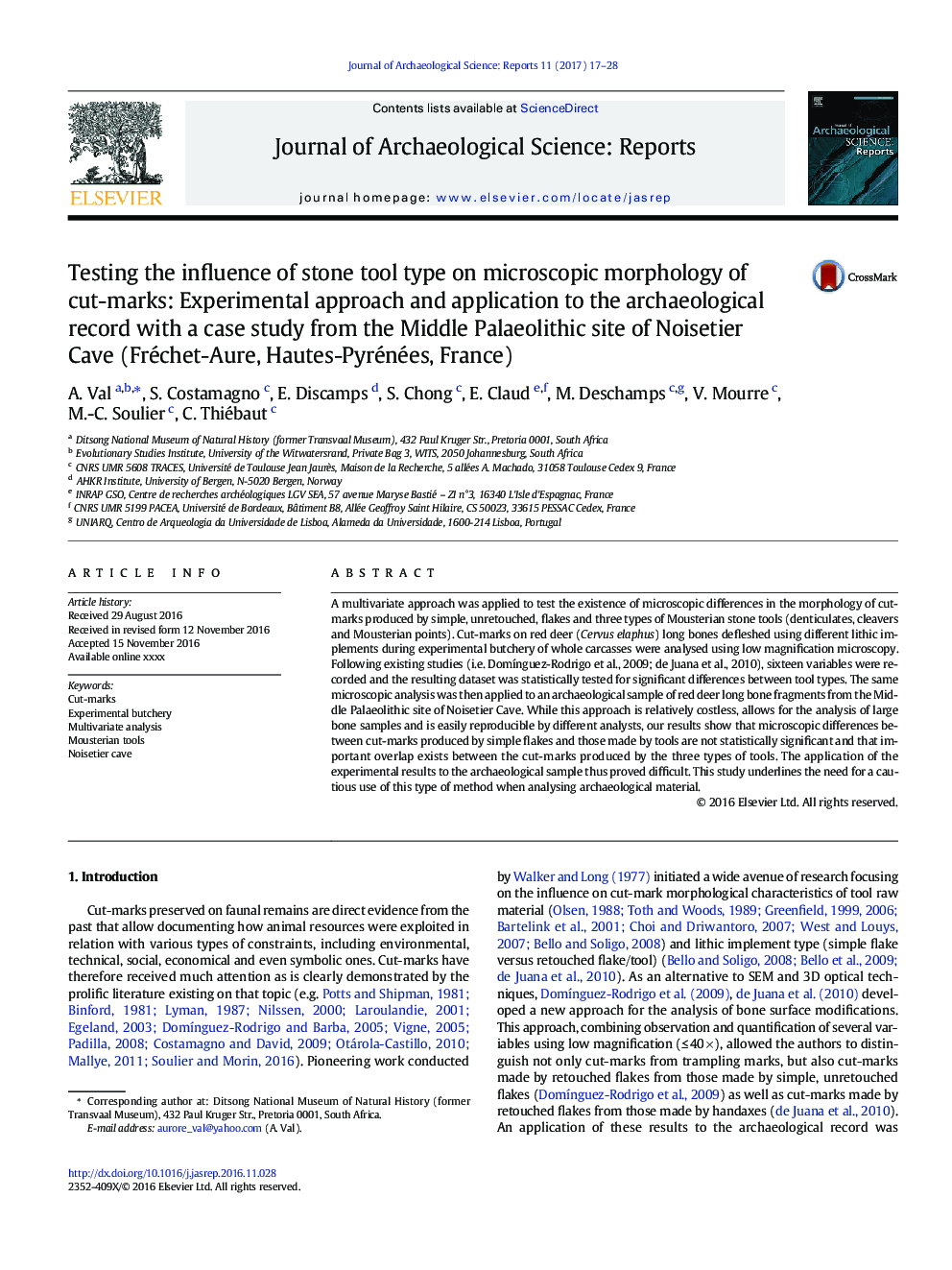| Article ID | Journal | Published Year | Pages | File Type |
|---|---|---|---|---|
| 5112545 | Journal of Archaeological Science: Reports | 2017 | 12 Pages |
Abstract
A multivariate approach was applied to test the existence of microscopic differences in the morphology of cut-marks produced by simple, unretouched, flakes and three types of Mousterian stone tools (denticulates, cleavers and Mousterian points). Cut-marks on red deer (Cervus elaphus) long bones defleshed using different lithic implements during experimental butchery of whole carcasses were analysed using low magnification microscopy. Following existing studies (i.e. DomÃnguez-Rodrigo et al., 2009; de Juana et al., 2010), sixteen variables were recorded and the resulting dataset was statistically tested for significant differences between tool types. The same microscopic analysis was then applied to an archaeological sample of red deer long bone fragments from the Middle Palaeolithic site of Noisetier Cave. While this approach is relatively costless, allows for the analysis of large bone samples and is easily reproducible by different analysts, our results show that microscopic differences between cut-marks produced by simple flakes and those made by tools are not statistically significant and that important overlap exists between the cut-marks produced by the three types of tools. The application of the experimental results to the archaeological sample thus proved difficult. This study underlines the need for a cautious use of this type of method when analysing archaeological material.
Keywords
Related Topics
Social Sciences and Humanities
Arts and Humanities
History
Authors
A. Val, S. Costamagno, E. Discamps, S. Chong, E. Claud, M. Deschamps, V. Mourre, M.-C. Soulier, C. Thiébaut,
